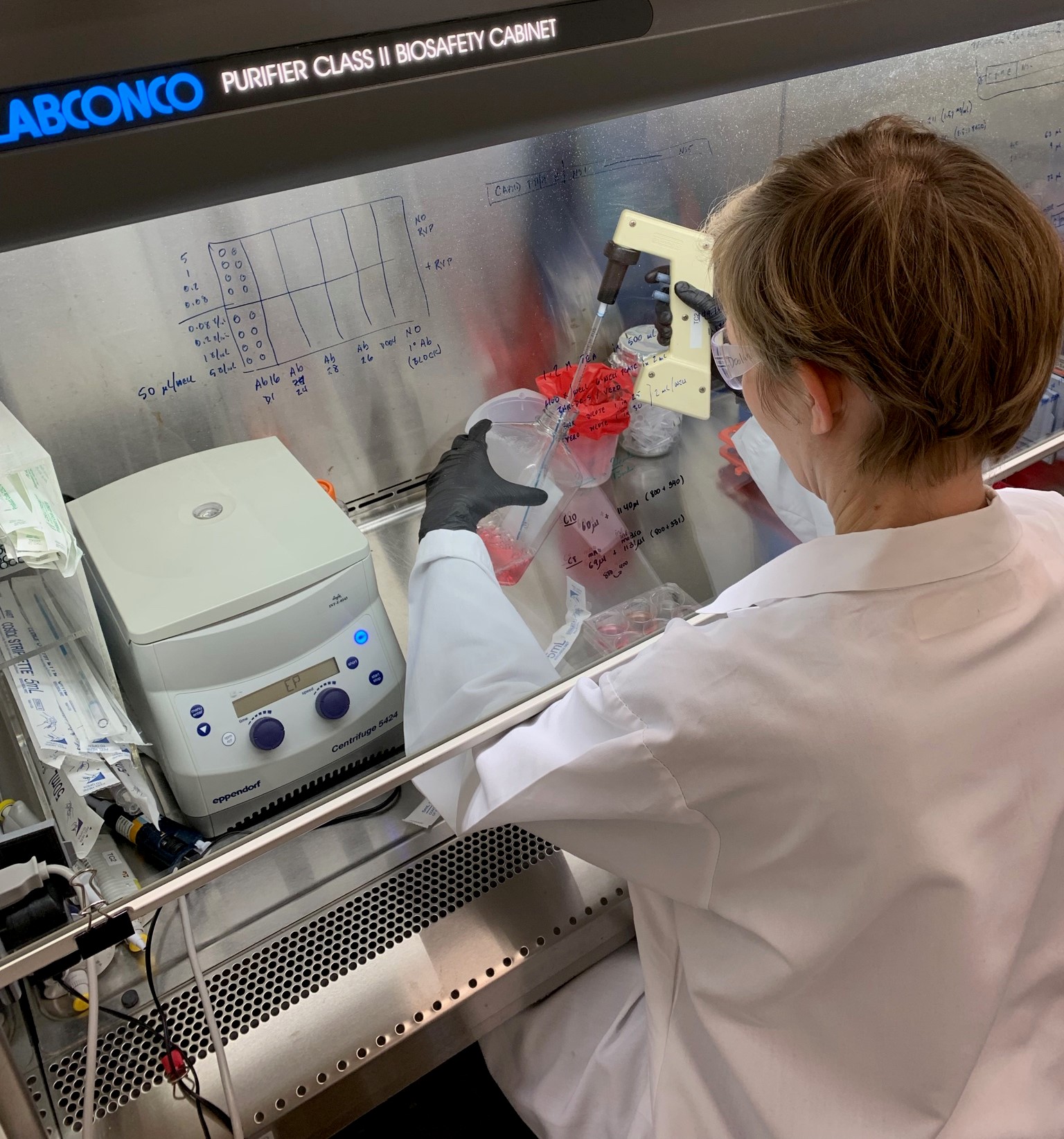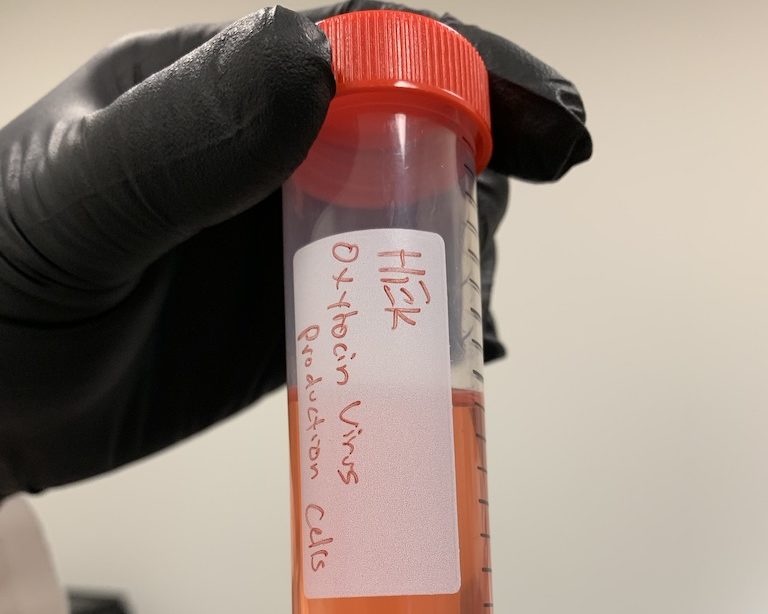When inoculated with the newly created Lovesick virus, which can produce a boost in oxytocin production, cells develop a pale reddish hue as a symbol of the love bug’s presence.
The artificial virus is a creation of transdisciplinary artist Heather Dewey-Hagborg as part of her three-month BioArt Residency at the University City Science Center, and in collaboration with biotech company Integral Molecular.
The New York-based artist, who holds a Ph.D. in electronic arts from the Rensselaer Polytechnic Institute, said the concept of a virus that could help feelings of empathy and love spread across the population first came to her while weathering both a “personal situation” and the current political climate.
“I thought, couldn’t we also create a more loving human population, fight against alienation and hate by using genetic engineering methodology and viral methodology?” said Dewey-Hagborg, a creator whose past projects have included the genetic reconstruction of strangers from discarded objects.
Alongside researchers from the Science Center and Integral Molecular, the artist produced the first run of the Lovesick virus named after the transdisciplinary research and arts project, also titled “Lovesick.” It poetically riffs on the idea of “romantic infatuation as a virus, and the process of moving on as building up antibodies,” per the project’s description.

Now, a fair warning: Though the Lovesick virus can function in a lab environment, it cannot replicate and will not be used to infect anyone. But what if someone were infected with it today? Integral Molecular CEO Ben Doranz said, theoretically, people would feel pretty good.
“That’s what oxytocin does, it triggers feelings of love and empathy,” Doranz said. “But nothing would happen currently because it’s a low dose. There’s a lot between here and developing a drug.”
So, what’s the point? The virus itself is the narrative component to the larger “Lovesick” art project, said Dewey-Hagborg, who will discuss both on Feb. 21 at Venture Café’s Thursday Gathering. The project’s next step is about storytelling rather than mass production or clinical trials.
Over the coming month, Dewey-Hagborg will get to work on an initial artistic exhibition — which will involve photo essays and sculptures in the shape of the virus molecule — set to go live in the Netherlands, plus a more expanded version of the installation set to go live in June in New York City.
The imaginative narrative surrounding the virus will also involve a backstory of its creation, a profile of the scientist who created it, how people react to it and what a universe infected by love could look like.
There’s also a key philosophical statement to “Lovesick” the project: That science can be thought of as artistic expression, and that both scientists and artists — as Doranz puts it — work on the manifestation of that which can’t be seen with the naked eye.
“The art is the virus itself, the process we’ve gone through, the experimentation and production of the cells,” said the artist. “That this is actually art is the most important part of the project.”







